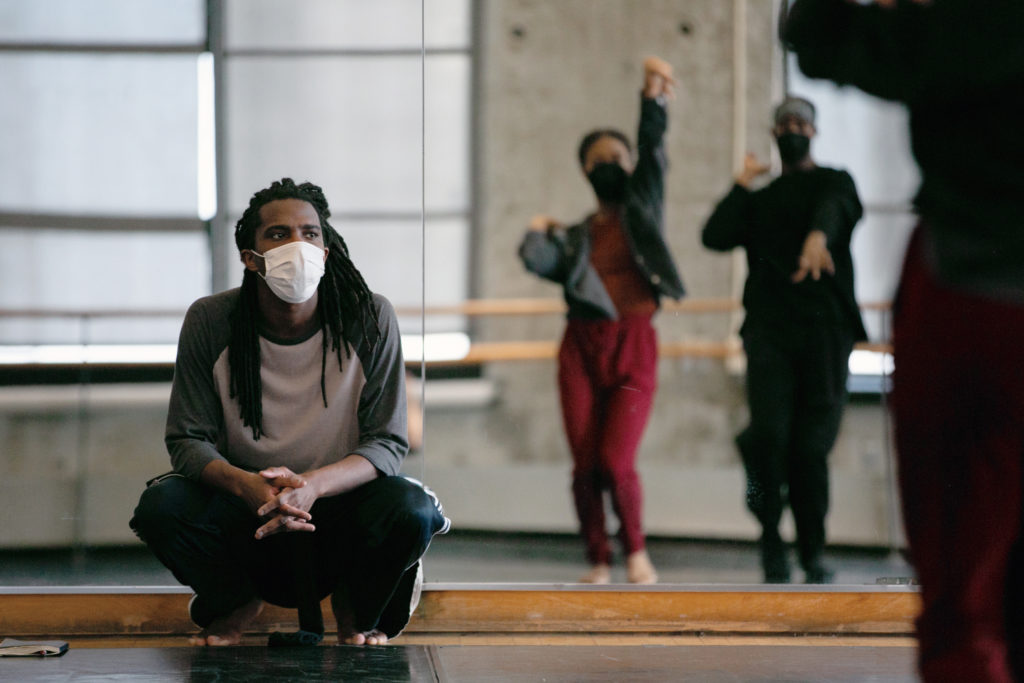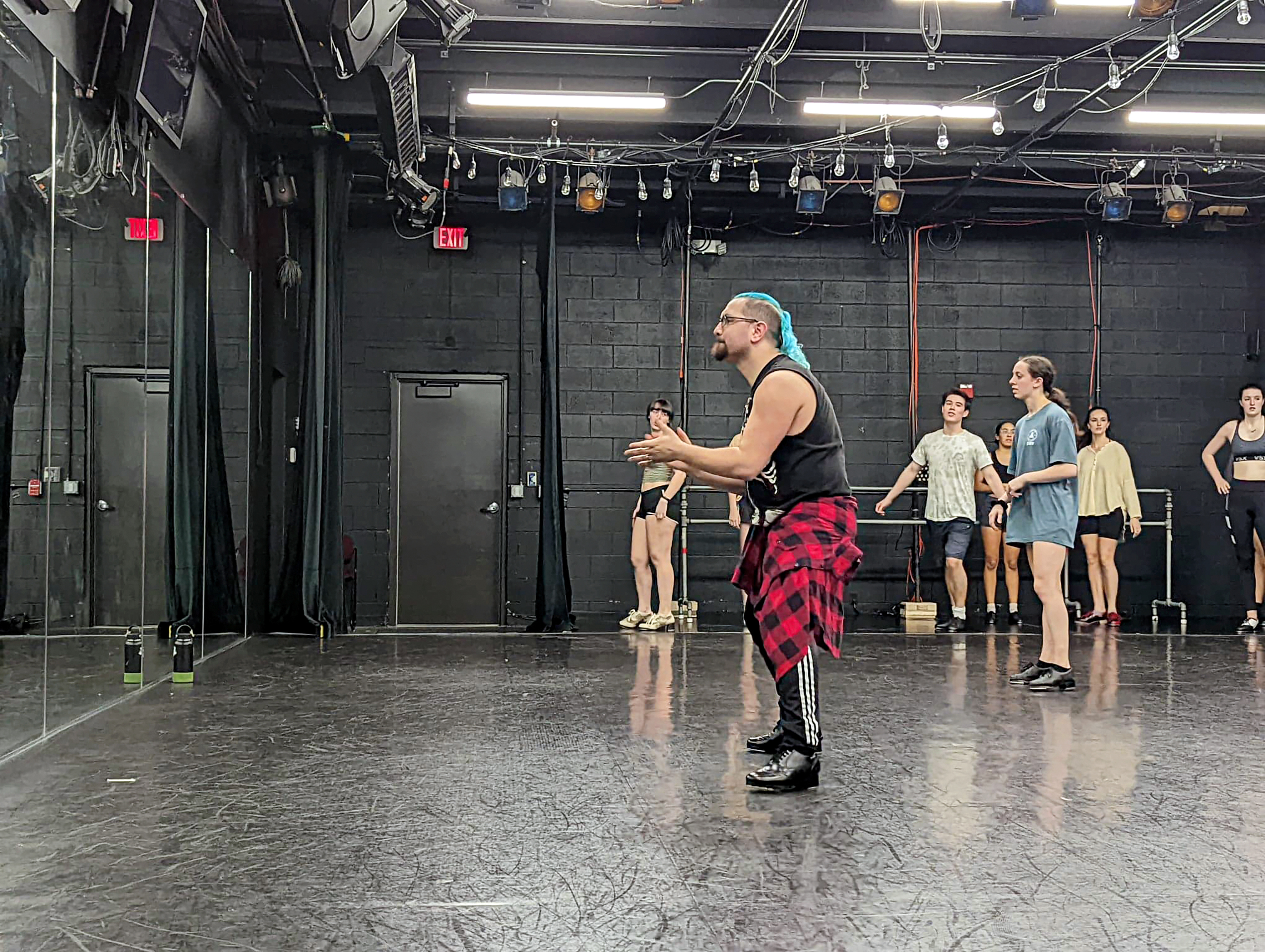The Dos and Don’ts of Breaking Into Adjuncting
The college dance scene can be a great resource for early-career choreographers looking to dip their toes into teaching or make new work on students, as it usually comes with a flexible schedule and considerable artistic freedom. But gaining entry into the higher-ed sphere, whether as an adjunct, a guest choreographer or a guest teacher, requires finesse—namely, as these three choreographers suggest, networking skills, a willingness to schedule far in advance and marketing savvy.
Cameron McKinney, Artistic director of New York City–based Kizuna Dance
The deal: In 2017, when planning tour stops for Kizuna in the UK and California, McKinney cold-emailed nearby colleges in California, asking if the company could offer a master class or short residency during a weeklong gap between performance stops. He didn’t get many responses—“Of the 30 I sent, I got a couple of replies, plus some people who said, ‘This might be a cool idea’ and never got back to me,” he says—but he did learn some valuable best practices for setting up residency stops for future touring.
DO start with the network you have. “Where did the dancers you work with go to college?” McKinney asks. “Nothing works better than a recommendation.”
DON’T go into negotiations without a fee in mind. “They’ll ask you on the spot: ‘How much does this cost?’ Before you reach out, make a budget: ‘I need to pay all of these people’—and add a contingency fee on top of that.”
DO inquire far in advance. Colleges generally plan their schedules months, and even years, ahead. McKinney, for example, has been adjuncting at Montclair State University this fall, but he was contacted about the position back in 2021.
Hindsight is 20/20: “If I could go back in time, before I’d reach out to a college, I would build up a program or series of programs that would make us more marketable,” he says. McKinney also wishes he’d had better video clips of the company. “Words are great, but they’ve got to see the work,” he says.

Charlie Maybee, Artistic director of the Polymath Performance Project
The deal: As an auxiliary adjunct at Shenandoah University in Virginia through July 2022, Charlie Maybee was, as he puts it, “as full-time as I can be, without being full-time.” While adjuncting comes with its own set of challenges—“I’ve had to split my time between different institutions, different online systems and multiple email accounts,” Maybee says—the flexibility of the role has been invaluable. “I have responsibilities, but I’m not as tethered to the university as a full-time position would be,” he says. “That gives me space to work on my choreography and writing.”
DO highlight your specialties. Maybee’s focus is tap dance, which is a unique asset when he’s applying for adjunct positions, including his current role at the College of Charleston. “I’ve found it helpful to define for myself and the people I work for that I have a particular skill set that is not as present in every dance curriculum,” he says.
DON’T do too much too soon. With each adjunct position he took on—past gigs have included the University of Illinois Urbana-Champaign and American University—Maybee says, “I started by doing very little, so I could test my bandwidth.” In his first semester with Shenandoah, for example, he taught only two tap classes and staged a work on students. “That allowed me to feel out which schools I could grow inside of.”
Hindsight is 20/20: Maybee notes that his ability to enact real change is limited as a part-time employee. “It’s not that you have zero input—you have the capacity to insert your two cents when you can,” he says. “But opportunities to do more change on a curricular or cultural level can be hard to do outside of your immediate classroom.”
Silas Riener, Creates work with Rashaun Mitchell
The deal: After dancing with the Merce Cunningham Dance Company from 2007–11, Riener began staging Cunningham repertory at colleges; he also began to create and stage his work with Rashaun Mitchell on students. Each college visit functions a little differently, Riener says: a one-day workshop, a two- or three-week process, or a semester-long stay. “That kind of puzzle-piece, Lego-building-block, moving-the-schedule-around-for-how-to-make-it-work is its own choreography,” he says.
DO work to be invited back. “It is to your advantage to be nice,” says Riener. “I remind people that this is a field built from relationships, and maintaining those relationships is how I work.”
DON’T assume that what works for one school will work for another. “If I have three weeks and rehearsal every day, that’s one thing—but if I have two weeks and I get to teach technique class, that’s another,” he says. “To ensure that you, the students and the university have a good experience, you have to work inside that container.”
DO start small. “If, say, you’re on tour in Boston, ask if you can do a master class at Boston Conservatory and if you can get them free tickets to your dress rehearsal,” Riener says. “It gives teachers a break, and they can usually scrounge up $150 for you.” He also suggests asking if a school is looking for a choreographer for a senior showcase solo. “That’s a way for the school to see that you do a good job, and you can work one-on-one with a student,” he says. Be sure to invite other faculty and staff to your performances. “They’re the ones in the meetings, doing the recommending,” Riener points out.
Hindsight is 20/20: “Because most of my gigs came from my Cunningham affiliation, I’m on the more privileged end of this conversation,” Riener says. “Universities respond to heritage and lineage, and that has given me a leg up.”




